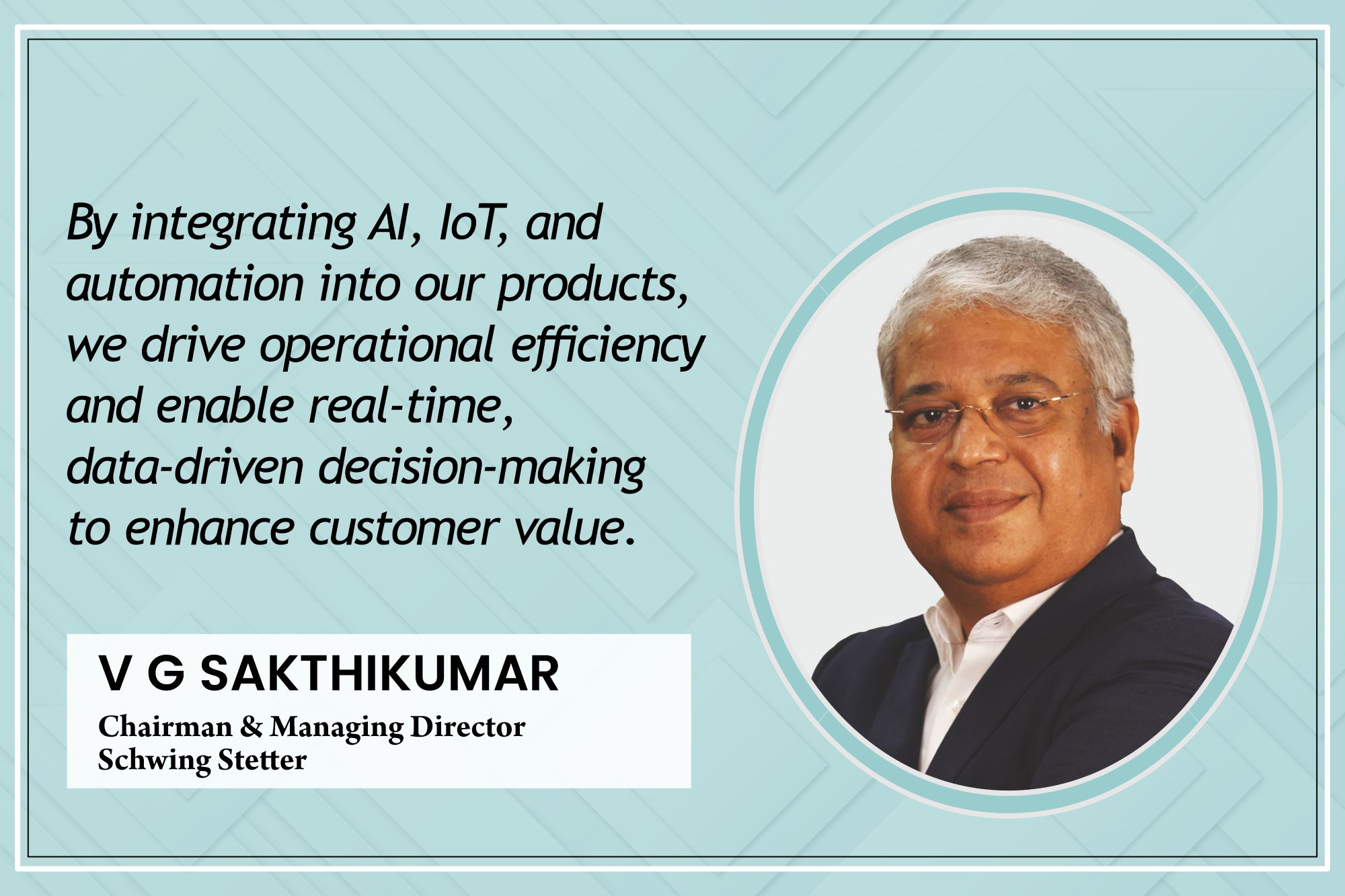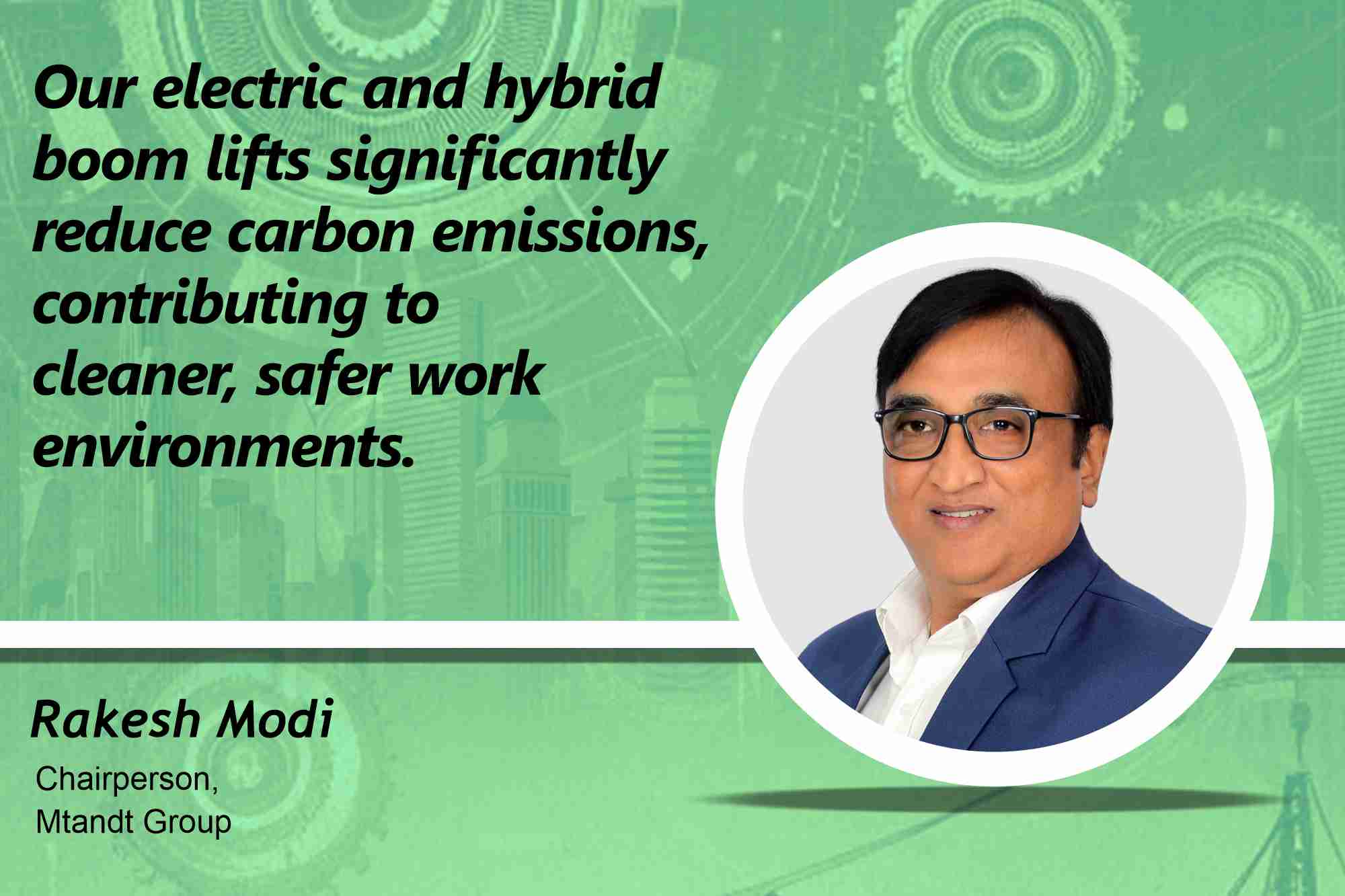Emerging market economies and future of Indian logistics
By Edit Team | April 20, 2017 12:30 pm SHARE

Shailesh Ved, Managing Partner of Swetal Logistics shares an in-depth analysis of the current logistics market in india and discusses the 2030 outlookWhat are Emerging Market Economies? Until 21st Century there was no standard list of countries, which were considered as Emerging Market Economies (EMEs), may be because the term itself was relatively new and didn’t have proper definition. A simple Google search of defining Emerging Market Economies (EMEs) gave up the result ‘The market of a developing country with high growth prospects.’ On broader terms Pearson Education ltd. (2016) defined EMEs as ‘Those countries, which have started to grow but are yet to reach a matured stage of development and/or where there is significant potential for economic or political stability’. Some renowned researchers in the field of international business have criticised the present definition of EMEs stating it as incomplete and to them for one to understand EMEs in today’s business scenario, one must see the emerging market through the lens of ‘institutional voids’ which are missing components in the economy. These institutional voids are the factors that make a market ‘emerging’ as these result in higher transaction cost and operating challenges in the market. One crucial institutional void in an economy could be physical infrastructure.Characteristics of EMEsIn early 2000s many studies have been conducted on EMEs and to make EMEs’ categorisation simpler researchers coined some simple characteristics like demographic changes, economic changes etc., but as the time passed and global economic scenarios changed while seeing tremendous ups and downs, these characteristics were not enough to justify EMEs. From the aforementioned definitions we can see that there is no set definition of EMEs, so to make justification more logical, researchers have devised few yet important characteristics, which categorise economy as EMEs. The characteristics are as follows: • Transitional economy: EMEs are the economies which are under process of change from central planning to free market – it often helps the economy to attract global players to invest in the market, but it has some short and long term constraints. • Less matured capital market: Globalisation is an evident impetus of the capital market as it is in the world economy. Less mature capital market like China and Brazil are precisely coming up in the global investment spotlight. EME’s are constantly facing clashes between the ‘Old-Economy’ and ‘New-Economy’ firms, these economies would see a rise of more consumer focused and resource efficient new economy which would help it emerge globally, but this would lead to low cost homogenise production of goods and cost cutting spree in the economy, which often results in backlash for 3 main factors of the economy- consumers, workers and environment. • Developing infrastructure and FDI: EMEs see a less developed or currently developing infrastructure in the economy. This factor also results in high government expenditure, but it helps the local market become attractive for foreign investors.India as an EMEIndia is one of the fastest growing economies in the world with real GDP of 7.3 per cent in the last quarter of 2016. India has a rapidly growing population and dynamic economy that could eventually usurp China to become the largest in the world. Doing business in India is a challenge in itself. Different researchers have different views for Indian economy – some say it’s underdeveloped and some say it is underrated. After the greatest economic reform of 1991, when India opened its gate for the world- researchers speculate that, if India continued to be on the path of this reform, it would be ever largest in the global competition and Multinational Enterprises (MNE) which would invest in India then would see the greatest success during the post reform period. The MNEs have nice opportunities in the emerging market like using ownership styles to liberalise market and gain market share, changing demographics often helps MNEs to try out new tactics to attract customer, gives opportunity to function in well-regulated structure, and opportunities of benefiting from other sectors in the economy. However taking a investment decision to invest in India is still a difficult task for MNEs, as there are some prominent risk like slower infrastructure development than anticipated, tackling bureaucracy, cultural differences, international economic scenarios, risk of hasty decision making while in rush to develop business and way too optimistic speculation of market response and change in economic policies.Indian logistics sectorLogistics sector can be broken down into 4 major categories freight transportation; maritime and port operations; postal and courier activities; warehousing, storage and handling. The Indian logistics industry was valued at an estimated $ 130 billion in 2012-13. It has grown at a CAGR of over 16 per cent over the last five years and is estimated to touch $200 billion by the year 2020. However, this can happen only with the help of a sound and efficient infrastructure. Though India is improving on its infrastructure despite the sluggish economic growth in the last decade and emergence of large middle class market with increasing purchasing power, few sectors in India still need to catch up with rest of the world to keep pace with development taking place in rest of the world. Indian logistics sector has seen major transformation in past –between early 1990s and mid 2000s. Initially, this industry was still in a nascent stage. Few manufacturers and low demand characterised it. The period 1994-2007 saw a major transformation of the distribution structure, to strengthen the coordination of this extended supply chain and to buffer against the differential tax structure across states, companies started to operate with Carry and Forwarding Agents (C&FA).By the end of 2007 companies started using 3rd party logistics (3PL) services, and another area that saw tremendous growth is- outsourcing of logistics service. While logistics outsourcing has been in existence for several decades, it was limited to transportation and warehousing. Post-liberalisation, the country has seen outsourcing of value added services like freight forwarding, fleet management, import/export and customs clearance, order fulfilment, consulting services like distribution network planning etc.Indian Logistics sector has seen a rapid yet promising growth in past, but what to expect in future?Indian logistics sector in 2030: A vision to followThere are many theories speculating the scenario of Indian logistics sector infrastructure in 2030 – for instance some researchers believe that, ‘There would be no longer a shortage of transport infrastructure since sufficient investments would have been made’, while some believe that, ‘by 2030 transport infrastructure development would strongly focus on urban areas, while rural areas would be neglected’ both having occurrence probability of 40 per cent and 60 per cent respectively. Currently the industry is facing lot many challenge be it political or economical, and the players are doing their best to sustain and thrive in the present scenario. It would be unwitting to speculate the unforeseen challenges of future in this dynamic condition of the industry, but there are some obvious challenges from which players of logistics sector could brace themselves and could be prepared to face eventual startling circumstances. Following are some anticipations and countermeasures that players can expect and follow in future:• The rapid economic growth and development of emerging countries in recent years indicates that the focus of economic power is shifting. According to a PwC economic analysis, today’s economic powerhouses (‘G7’, including the US, Japan, Germany, UK, France, Italy and Canada), would be overtaken by the current emerging economies ‘E7’ by 2050, Cash would be King — But the financial power for investment in transport infrastructure would vary from country to country. Whether a country is already industrialised or emerging it wouldn’t shed any light on the availability of fund to financing the maintenance of transport infrastructure will be a greater challenge than attracting capital for investments in new transport infrastructure.• Environmental sustainability would be a key to success for Logistics in India. Transport infrastructure will increasingly be assessed on environmental compatibility, in addition to its ability to stimulate economic growth. The transport sector’s energy use is projected to grow by an annual rate of 1.9 per cent, which would make the sector the world’s primary energy-consumer by 2020. Transport operators, transport infrastructure operators should be prepared to be included in emission trading systems or other schemes of emission control and reduction. The entire transport and logistics industry should collaborate to better manage transport emissions and optimise its environmental compatibility.• Logistics service providers could/should join logistics clusters and actively collaborate with transport infrastructure operators, government, and academia. Government will need to make sure that sufficient funds are available to finance transport infrastructure, while academia can provide new ideas and solutions from a broad strategic perspective to improve operational processes.In conclusion it can be said that- In future ‘Logistics sector’ would be one of the most promising sectors of today’s EMEs like India, but the point to be noted is, massive investments in development of infrastructure of this sector is just a part of the process and wouldn’t suffice to close the infrastructure bottlenecks by 2030. The Key to success lies in strategic collaboration and investment plans to face unforeseen challenges and convert them into opportunities of growth for the players in the industry. Authored by__Shailesh Ved, Managing Partner, Swetal Logistics (Mukund Group, Nagpur)
Cookie Consent
We use cookies to personalize your experience. By continuing to visit this website you agree to our Terms & Conditions, Privacy Policy and Cookie Policy.



















